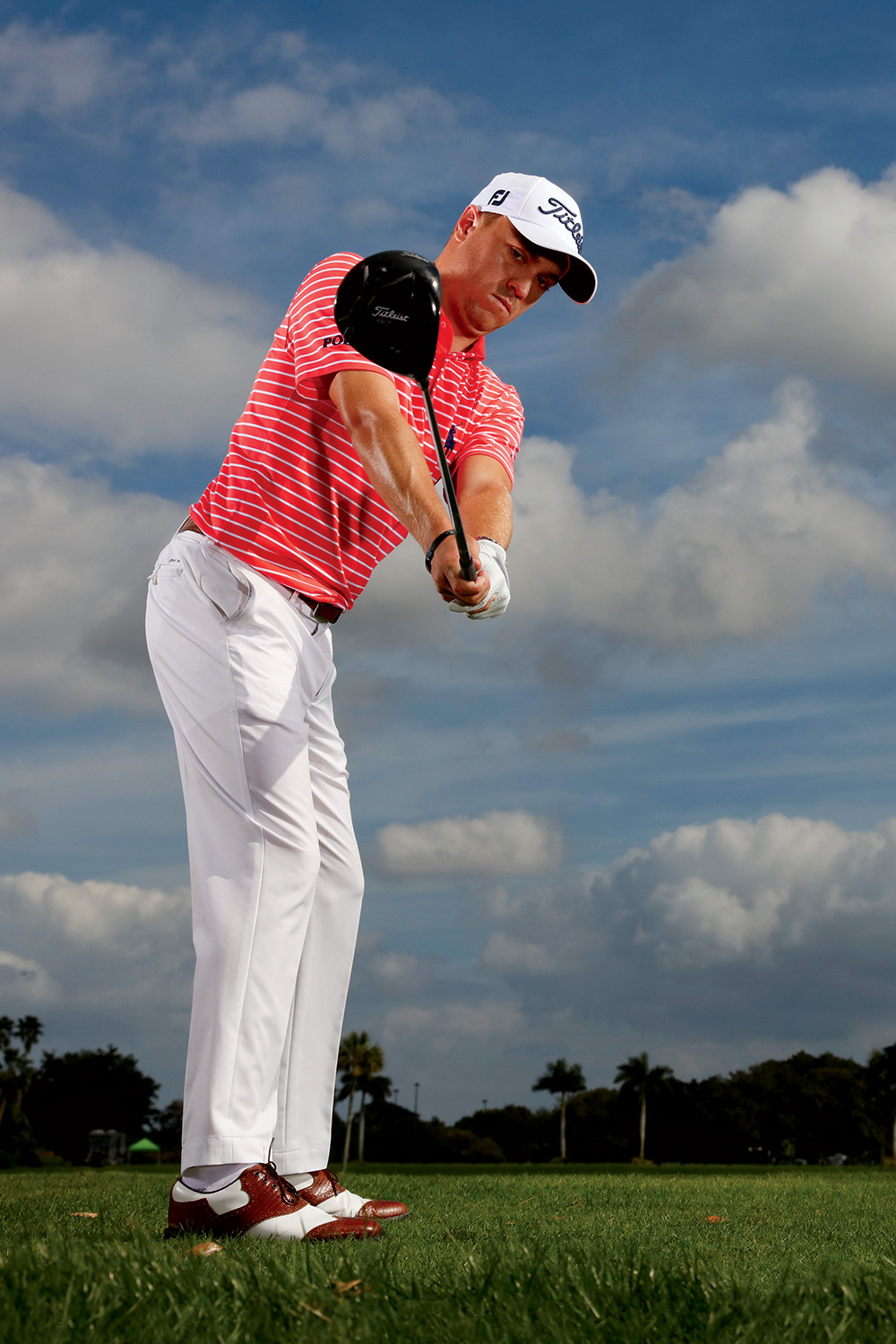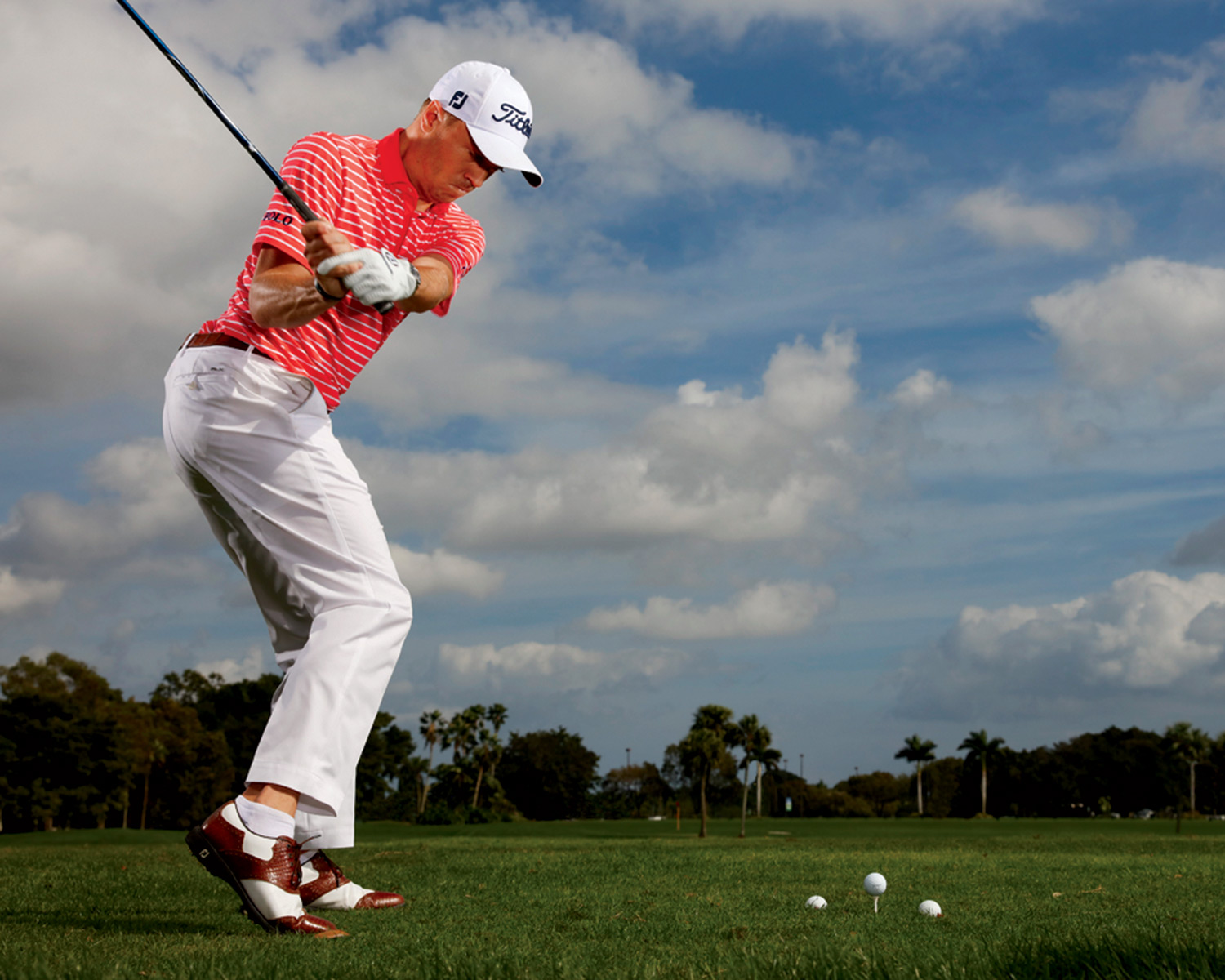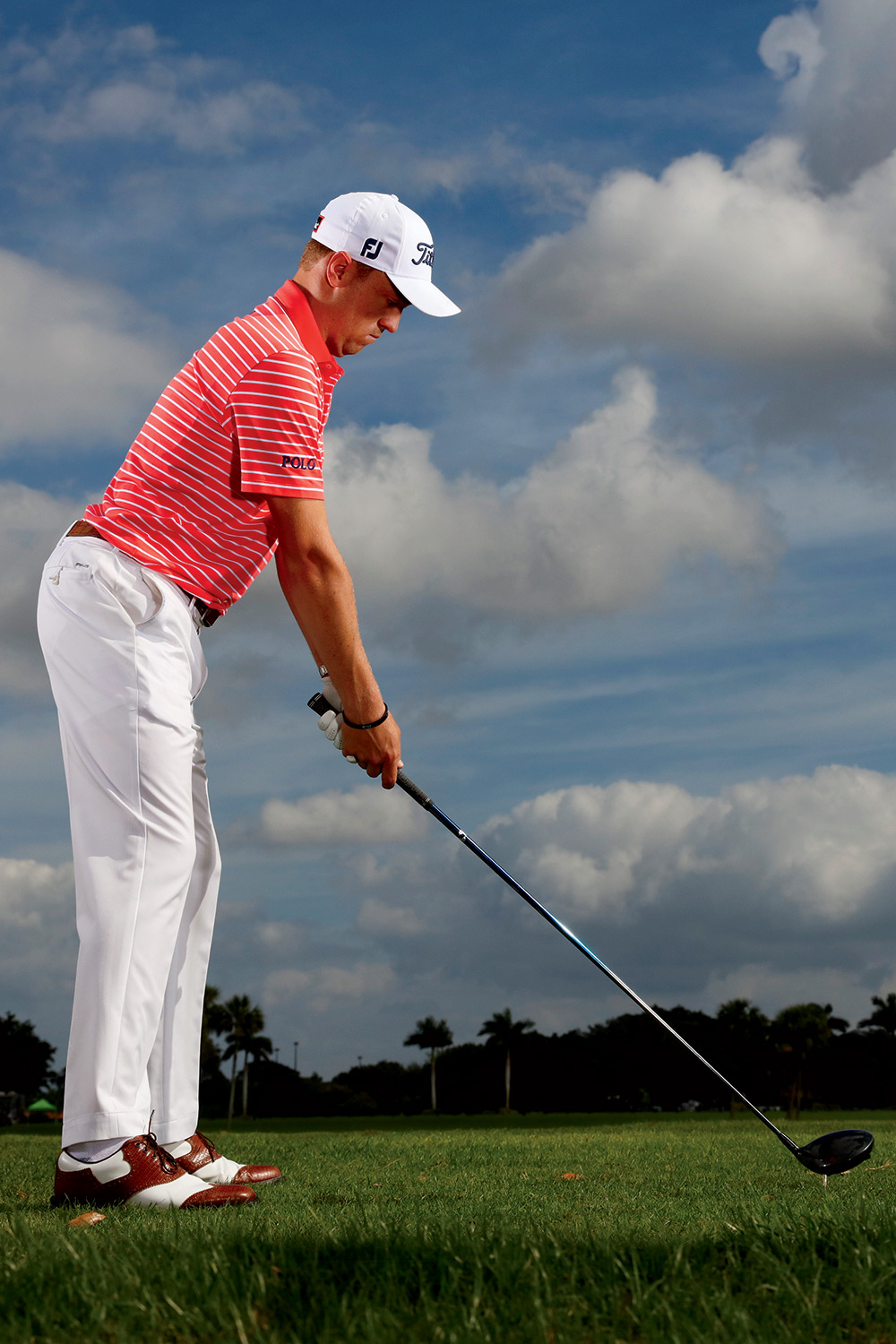When people analyse my swing, they always focus on my footwork. I get it. It’s the most noticeable thing. I’m sure your eyes are drawn to it in these two photos. But there are a lot of things I do that contribute to hitting it 300-plus off the tee. And since it’s unlikely you’re going to start jumping off the ground to pick up 10, 15, 20 more yards on your drives, you might want to work on the other things I do. Believe me, I’m not super technical, but I’ll do my best to walk you through the elements of my driver swing and what I work on for consistency. Hopefully this will give you some fresh ideas on how to smash your tee shots. – with Ron Kaspriske
Address: Don’t Take It For Granted
With all the reps we get on tour, you’d think setting up to the ball correctly is automatic. It’s not. I’ll often look at my swing on video and notice that my body alignment is out of whack. My feet might not match my shoulders, or something like that. That’s why I make a point to really square myself to the target. You’ll notice here I’ve dropped my right foot back about an inch in relation to my left. This is just a suggestion for any of you who might slice the ball, or struggle to swing down on plane from inside the target line. It will help give you a little extra room to improve your swing path and hit the ball solidly instead of swiping across it, which causes that weak slice. Also notice that I’m standing tall. This allows me to swing on as wide an arc as possible. Wider swings mean longer drives. Finally, my weight is roughly centred within each foot. If you feel a lot of pressure in your toes or heels, you’ll have a tough time keeping your balance when you swing. And the faster the club is moving, the more you’ll struggle.
Going Back: Set The Stage For Power
 Just like taking your setup for granted, you’d be amazed what can go wrong if you don’t really pay attention to the first part of your backswing. Rhythm, timing, width, path – all keys to smashing the ball – have to be good from the start. I suggest you practise this part of the swing. Get it right, and you’ll really increase your odds of hitting it in the centre of the clubface – and that’s where you’ll see your biggest power boost. Take the club back until the shaft is parallel to the ground, then stop and have a look [below]. Things to check: Is your left arm extended? Is the shaft pointing parallel left of your target line? Do your wrists feel flat? Are you relaxed and in no hurry? These are all good things. When I won twice in Hawaii in January, I was really paying attention to this part of the swing. I wanted to make sure I wasn’t whipping the club inside the target line. You can get into some weird habits if you don’t routinely check. It also adds a level of confidence that you’re doing everything you can to set up a big tee shot that finds the fairway.
Just like taking your setup for granted, you’d be amazed what can go wrong if you don’t really pay attention to the first part of your backswing. Rhythm, timing, width, path – all keys to smashing the ball – have to be good from the start. I suggest you practise this part of the swing. Get it right, and you’ll really increase your odds of hitting it in the centre of the clubface – and that’s where you’ll see your biggest power boost. Take the club back until the shaft is parallel to the ground, then stop and have a look [below]. Things to check: Is your left arm extended? Is the shaft pointing parallel left of your target line? Do your wrists feel flat? Are you relaxed and in no hurry? These are all good things. When I won twice in Hawaii in January, I was really paying attention to this part of the swing. I wanted to make sure I wasn’t whipping the club inside the target line. You can get into some weird habits if you don’t routinely check. It also adds a level of confidence that you’re doing everything you can to set up a big tee shot that finds the fairway.
Drill: Adjust your path and you’ll bomb it
 Anytime you’re in a rut hitting slices or hooks, try this drill I use all the time: tee up a ball and place a ball on both sides of it. If you’re slicing, the outside ball should be farther from the target than your tee ball, and the one on the inside should be closer to the target. Notice how this creates a gate for your club to swing on an in-to-out path in relation to the target line. The idea is to hit your tee shot without touching the other golf balls. If you hit the ball outside the one you teed up, you’ll know you’re still swinging on a slicer’s path. For hooks, just reverse the positions of the surrounding balls, and you’ll see a gate that promotes a slightly out-to-in path. I’ll hit 15 to 20 balls with the gate in whatever configuration that helps me feel the sensation for the shot I’m trying to hit. It really straightens me out. If you can reduce the curve to your shots, I guarantee you’ll pick up some real distance.
Anytime you’re in a rut hitting slices or hooks, try this drill I use all the time: tee up a ball and place a ball on both sides of it. If you’re slicing, the outside ball should be farther from the target than your tee ball, and the one on the inside should be closer to the target. Notice how this creates a gate for your club to swing on an in-to-out path in relation to the target line. The idea is to hit your tee shot without touching the other golf balls. If you hit the ball outside the one you teed up, you’ll know you’re still swinging on a slicer’s path. For hooks, just reverse the positions of the surrounding balls, and you’ll see a gate that promotes a slightly out-to-in path. I’ll hit 15 to 20 balls with the gate in whatever configuration that helps me feel the sensation for the shot I’m trying to hit. It really straightens me out. If you can reduce the curve to your shots, I guarantee you’ll pick up some real distance.


